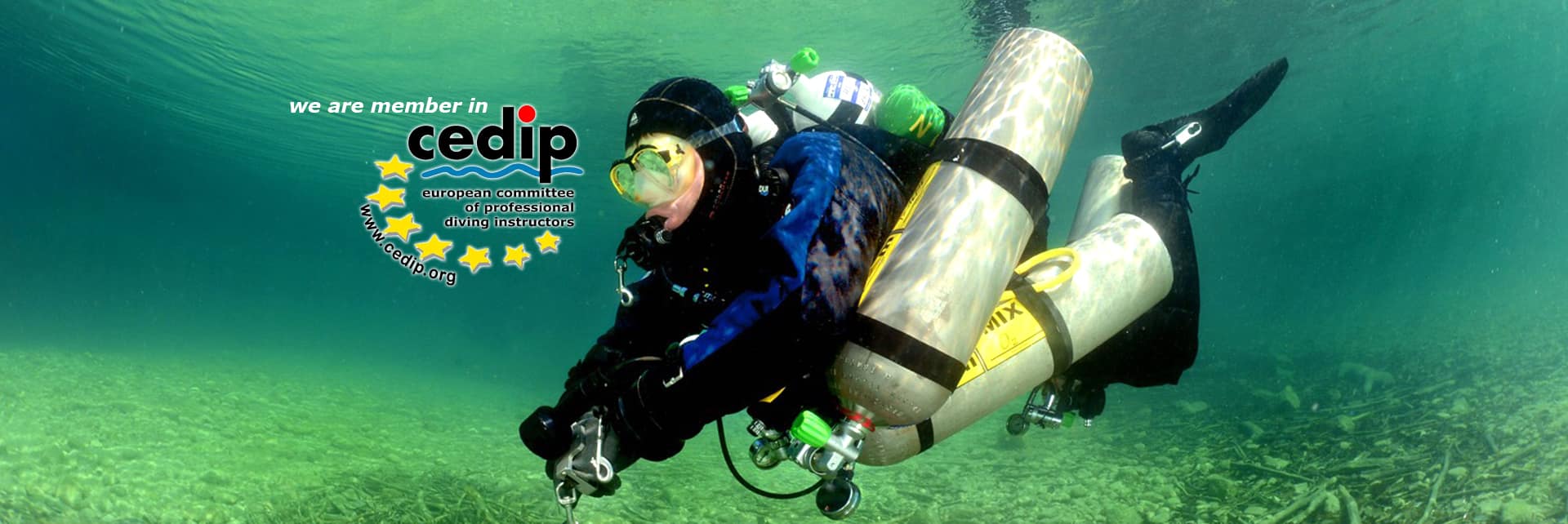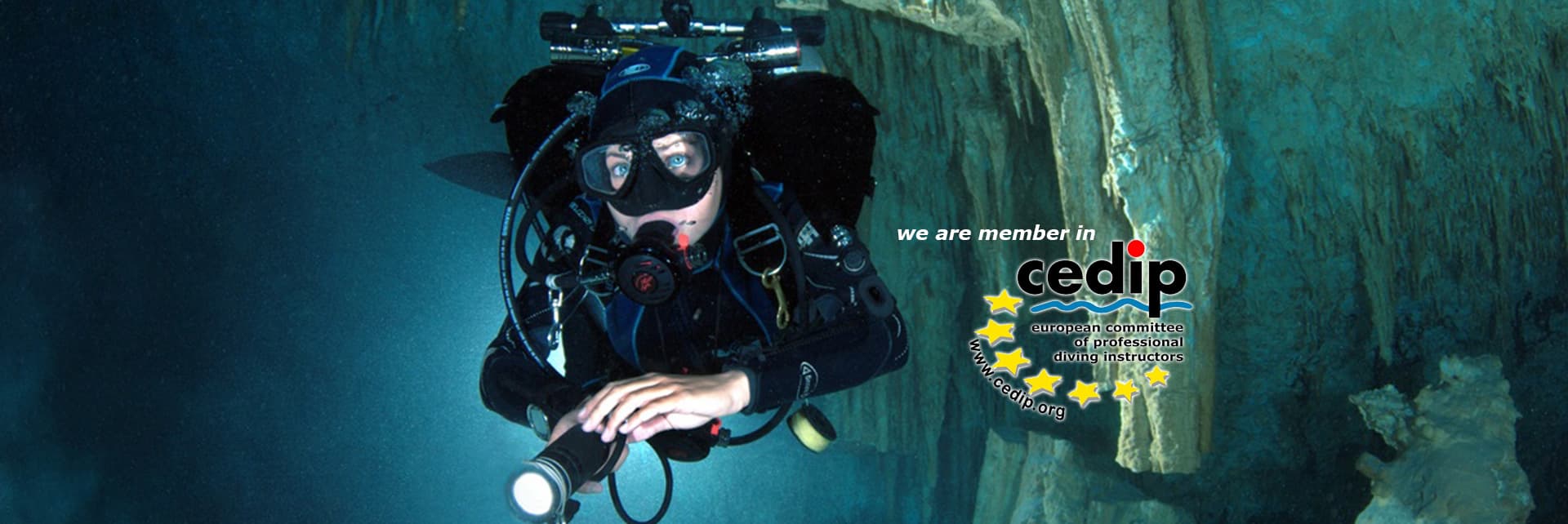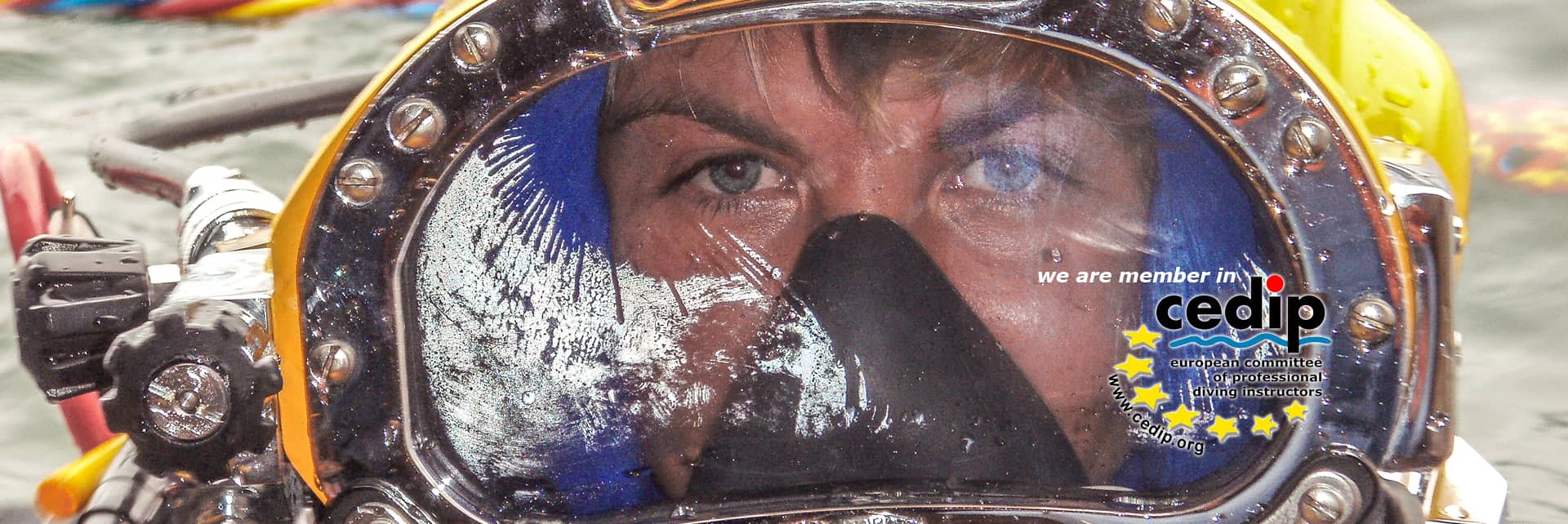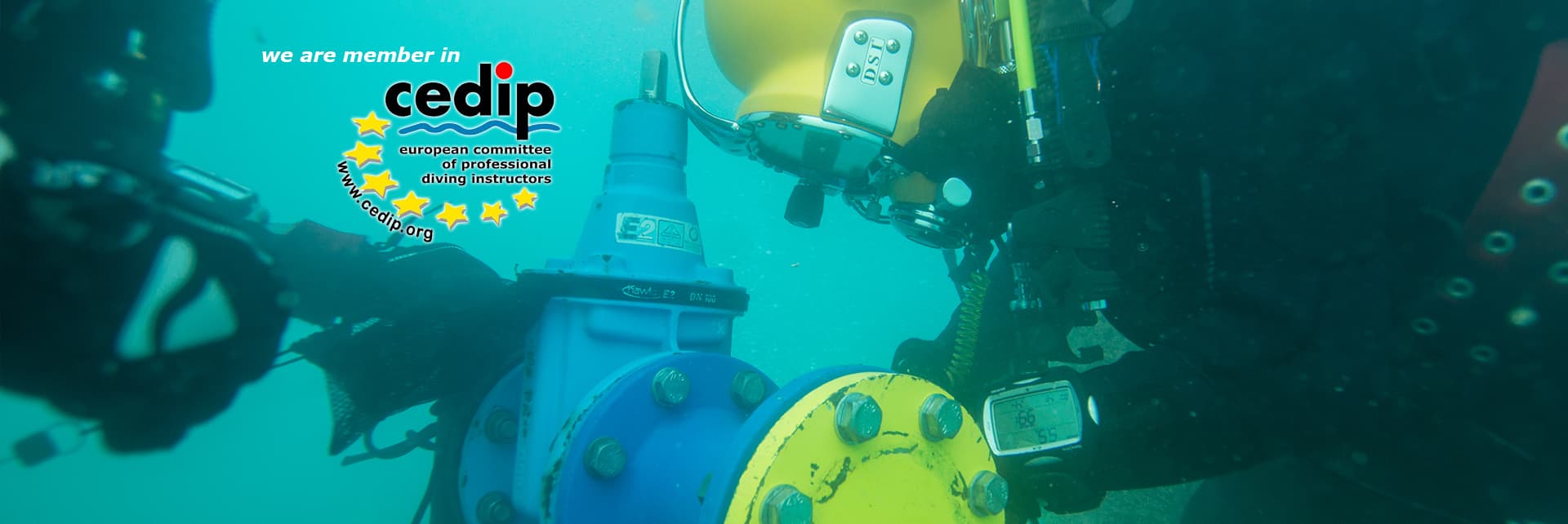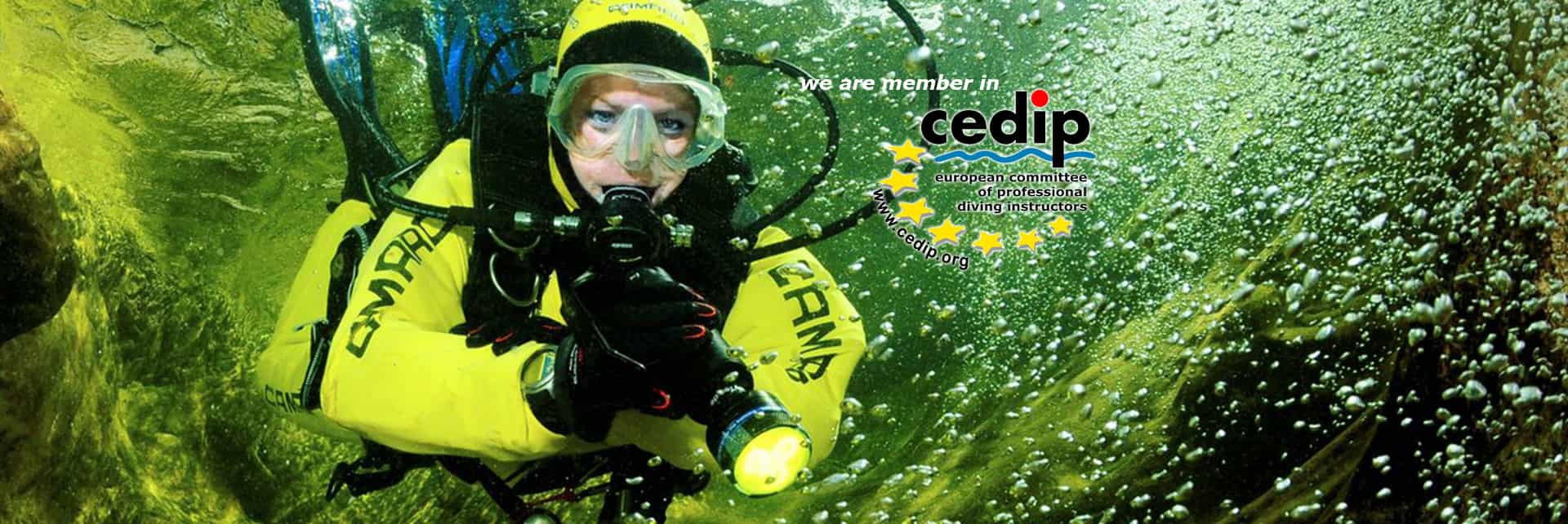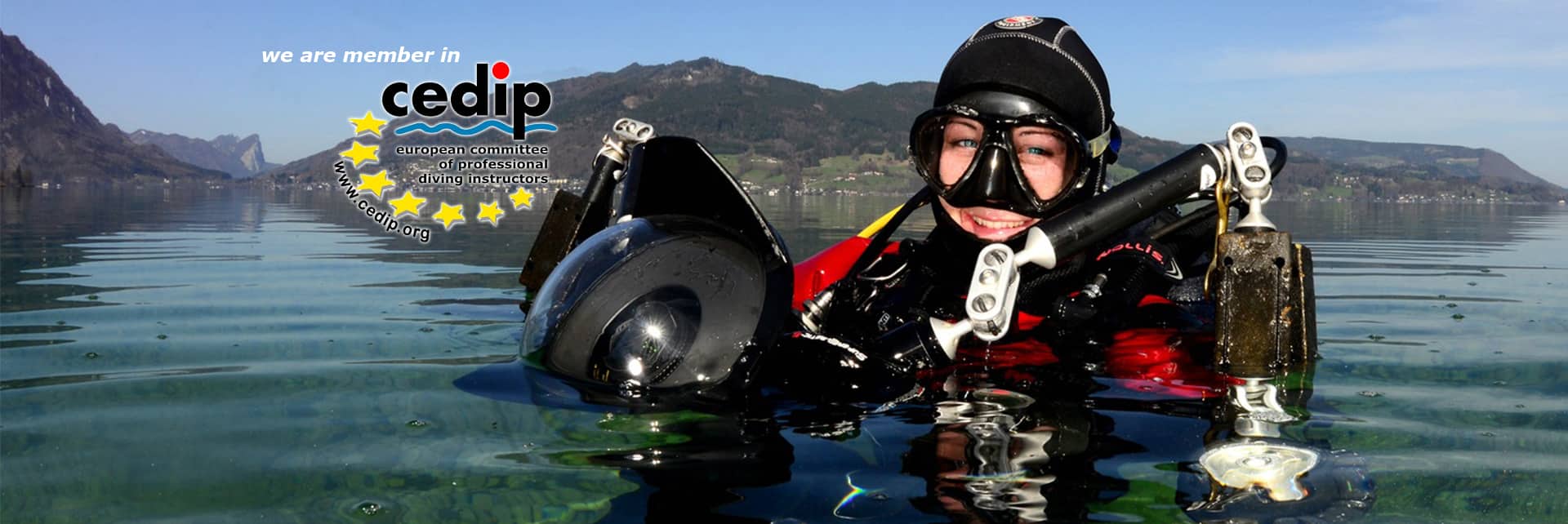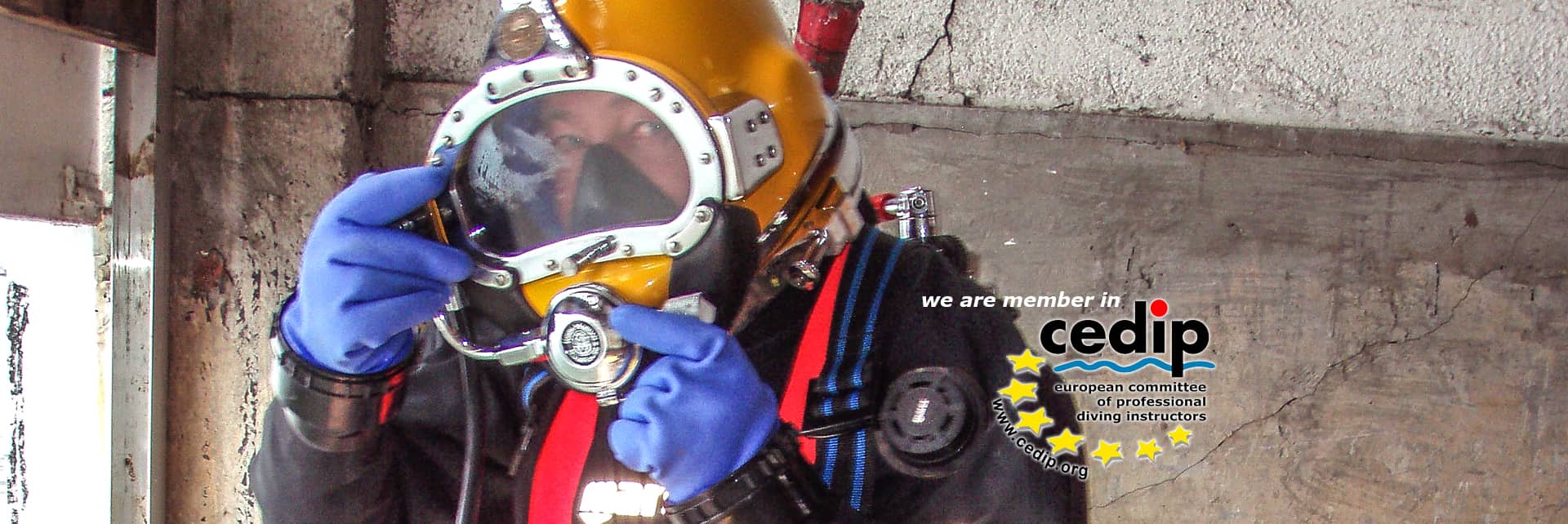Physical basics
pressure
The term pressure means the force acting on a surface. This means that the respective pressure depends on the weight and the area. In a pure medium in which there is no movement, the forces balance out, which means not only that the respective ambient pressure only comes into play when there is a surface on which it can act, but also that the pressure is not rigid as one on the Ground-pressing weight force can be seen. As an example, the diver should be mentioned on whose body surface the pressure in the medium of water acts from all sides.
For the diver, the pressure specifications in bar and Newton (N) are common. However, the details of the physical and technical atmosphere are also important.
We differentiate between static or stationary pressure loads and dynamic pressure loads. The principle of load distribution is also based on the relationship between pressure and area. We find load distributions, for example, everywhere on buildings, in which forces are deliberately diverted or distributed on surfaces. With regard to pressure or suction loads, the aim is primarily to increase the area on which various loads act. Under water, we find this principle, for example, in the enlargement of the area by means of grids, baskets and the like at drains and areas where suction loads occur or can occur. The enlargement of the area is accomplished by the distance to the opening.
If, for example, a grille were mounted directly on a pipe opening, the suction area would be reduced and the acting force would be distributed over an overall smaller area, resulting in a selectively higher suction force or the force acting more strongly on several smaller areas.
In the same sense, we find this effect when using a fire hose, for example. Due to the deliberately designed smaller area at the jet pipe outlet in relation to the actual hose diameter, the pressure acts on the smaller opening, resulting in the water mass being concentrated on a smaller area. This is also a desired variant of a load distribution in which a reduction in the area is sought.
Note:
- With a desired “relief” the aim is usually to distribute the force over a larger area.
- With a targeted “bundling” of the force at one point, the area on which a force acts is deliberately reduced (e.g. Aqua Cut).
Water and air have a certain weight and thus exert a pressure on their surroundings that is the same in all directions. The column of air that rests on us has a certain composition and height, which means that at sea level there is a pressure of 1 bar = 1000 millibars.
This value varies slightly depending on the weather.
The water column that weighs on us has a pressure of 1 bar per 10 m of water column .
The ambient pressure under water consists of the air pressure (usually 1 bar) and the water pressure.
This results in a pressure of:
on the surface: 1 bar
at a water depth of 10 m: 1 bar air column + 1 bar water column = 2 bar
at a water depth of 20 m: 1 bar air column + 2 bar water column = 3 bar
at a water depth of 30 m: 1 bar air column + 3 bar water column = 4 bar
At a water depth of 33.2 m: 1 bar air column + 3.32 bar water column = 4.32 bar
The physical atmosphere or also called physical pressure basically refers to the earth’s atmosphere (air pressure). When diving, this is given as a flat rate of 1 bar at sea level. At the top, the air pressure decreases by 0.1 bar for every 1000m above sea level . The air pressure at 2000m above sea level is therefore 0.8 bar. Thus, in accordance with no-fly times, no altitude should be visited for the calculated period after diving. Likewise, dives in higher water should be considered repetitive dives unless compensated with nitrox.
Note:
- Air pressure does not decrease linearly , but exponentially
- There is no proportionality between altitude and air pressure
Basic unit of physical atmosphere = ATM
The technical atmosphere or technical pressure (relative pressure) is specified, for example, in hydraulics technology. The technical pressure is the limited or prevailing pressure in a container (e.g. operating and working pressures). For example, if a hydraulic tool is operated at an operating pressure of 400 bar, this means the technical pressure. This also means that the pressure in the supply line is 400 bar above the ambient pressure (air pressure).
Basic unit technical atmosphere = AT
or ATÜ = technical atmospheres above reference level
The absolute pressure is the sum of all prevailing pressures. The term absolute pressure is often wrongly equated with ambient pressure. The fact that there is a pressure of 20 bar in a pipeline does not mean that it acts on its surroundings with a pressure of 21 bar.
The actual ambient pressure of 3bar at a depth of 20m known to us when diving is the sum of 1bar air pressure and 2bar water pressure.
So 1 bar physical pressure and 2 bar technical atmosphere = 3 bar absolute pressure.
Note: If the tire pressure gauge at the gas station shows a pressure of 2.3 bar, this means the overpressure compared to the atmospheric pressure of approx. 1 bar. The pressure in the car tire is therefore 2.3 bar above atmospheric pressure.
The absolute pressure is therefore 3.3 bar.
As the name suggests, solids have a fixed shape. While liquids and gases can be easily deformed.
Solids and liquids have a fixed volume and are difficult to compress, while gases can be easily compressed. Density , defined as mass per volume , is large in both solids and liquids, while it is small in gases.
It is also variable for gases because they can be compressed, but is essentially constant for solid and liquid substances.
Note: Solid bodies have a certain rigidity and hardness, liquids collect on the ground simply due to their weight, and gases completely fill a vessel.
Pressure distribution in solid bodies, liquids and gases
Anyone who has ever laid on their back on a soft mattress and on a hard rock knows the difference that the contact surface and the distribution of force make on it. With the mattress, the weight is distributed more evenly, while with the rock you can feel hard spots and sharp stones.
If you press on a plate on the table, the pressure is passed on to the table.
If, on the other hand, you press coffee in a cup with your finger, it simply avoids it.
Solids, gases and liquids behave differently under pressure .
pressure, hydraulics and pneumatics
If a liquid is trapped, it cannot simply avoid the pressure, but gives it
the boundary surface further. Pascal’s principle states that when a liquid or gas is confined and subjected to pressure at any point, it will redistribute it evenly.
The liquid or gas exerts the force F on the boundary surface [ A ]. the end.
Force can therefore be transmitted using the Pascal principle.
Hydraulic systems use a liquid (usually oil) and pneumatic systems use a pressurized gas (usually air).
car brakes, for example. are hydraulic and require brake fluid.
Brakes on the railroad are pneumatic, which can be recognized by the hissing of the released compressed air.
